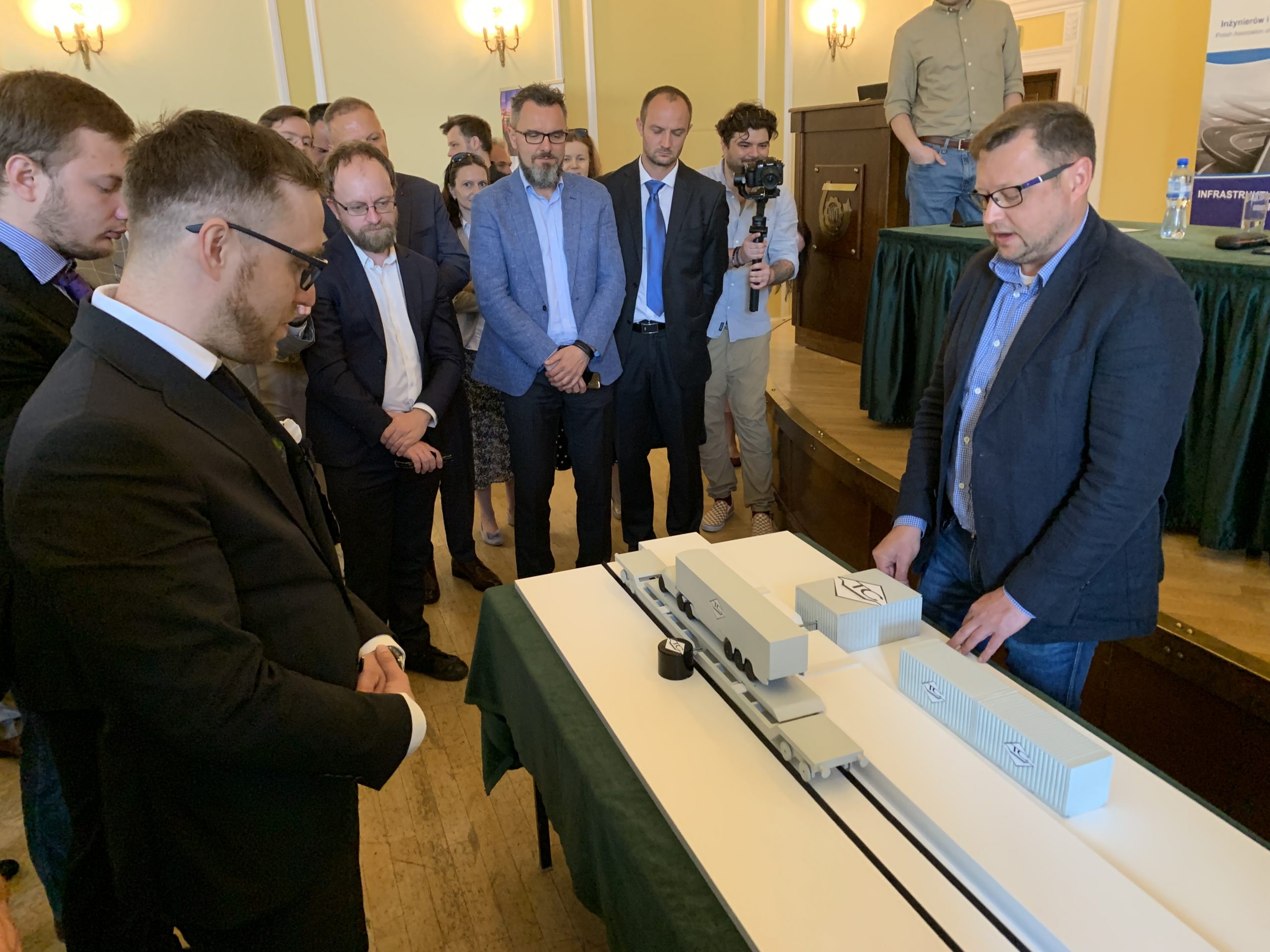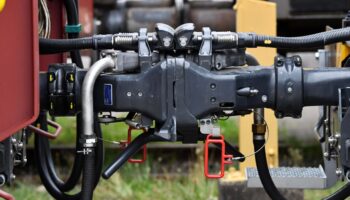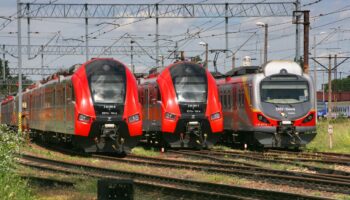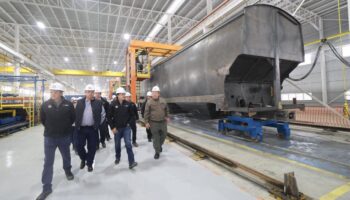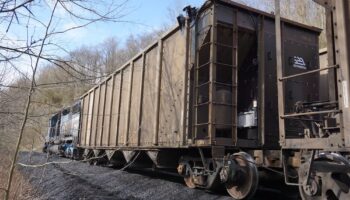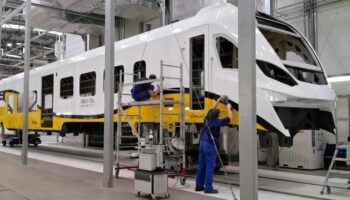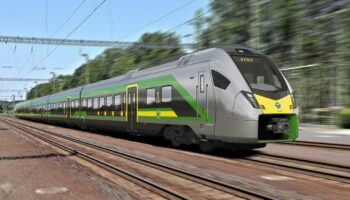Poland: The Association of Polish Engineers and Technicians (SITK) in early June presented a scale model of the Mark II piggyback system, which should speed up the process of semi-trailers transportation via railway transport. This technology was patented several years ago, but so far it is not of interest to potential customers and investors in the country. At the same time, another technology for fast loading and unloading of semi-trailers onto piggyback flatcars, developed by the French group of companies Lohr, was launched in Poland in March this year.
As conceived by Polish engineers, operations for semi-trailers loading and unloading on the Mark II flatcar should take place as follows. A truck with a semi-trailer drives onto an extended ramp, which is located on a special stopping platform. After that, the truck unhooks the semi-trailer and drives off, and the ramp, together with the semi-trailer, begins to move horizontally to the left via batteries traction, until it completely stands on the piggyback flatcar. Accordingly, the unloading occurs in the opposite way.
Mark II piggyback unloading demonstration. Source: www.nakolei.pl
The flatcar developers claim that it can be modified to carry containers. Mark II can also be adapted to carry heavy military equipment. SITK believes that in order to start the mass introduction of the piggyback flatcar, a decision by the state must be made.
The presentation of the Mark II scale model took place against the backdrop of the launch in Poland of another piggyback loading and unloading technology for semi-trailers called the Lohr Railway System. Since the beginning of March, the Lohr terminal has been opened in Swarzedz, Poland, which serves piggyback flatcars operation between Poland and Luxembourg.
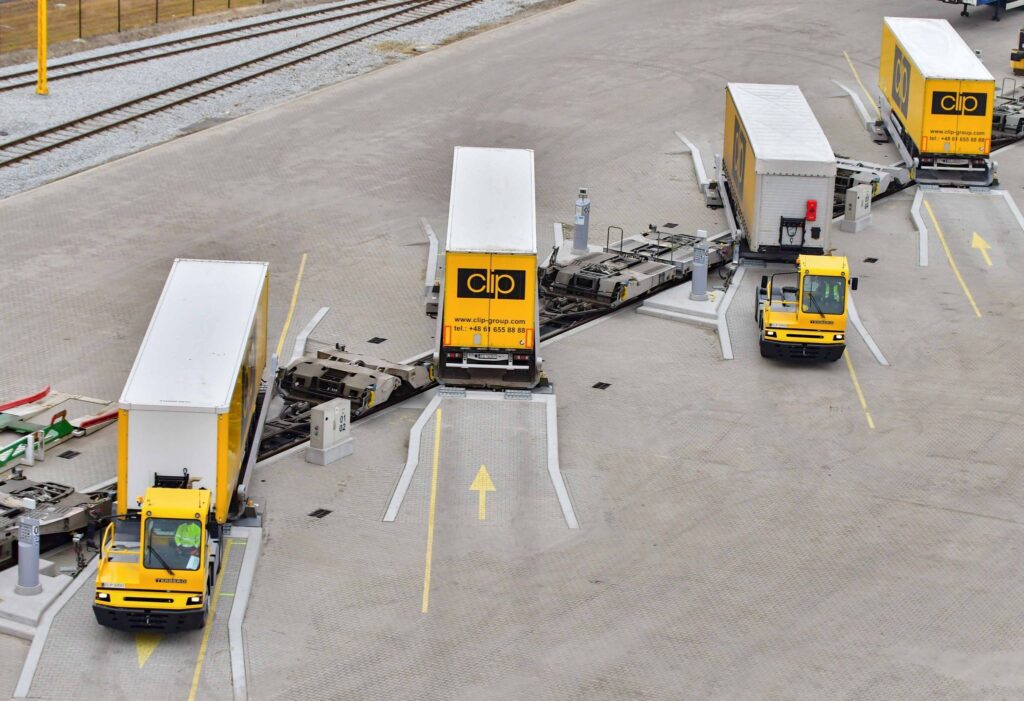 The new Lohr terminal in Swarzedz, Poland. Source: Lohr
The new Lohr terminal in Swarzedz, Poland. Source: Lohr
The basis of the Lohr Railway System technology developed in 2007 is the Lohr UIC flatcar with a lifting capacity of up to 77.3 t, equipped with a swivel lowered ramp. It is currently implemented in several European countries. Unlike Mark II, for which it is necessary to build a stopping platform, here its functions are performed by a special terminal complex. A truck rolls the semi-trailer in reverse on a ramp rotated by 45% in relation to the flatcar, which stands on the tracks located below the highway, after which the truck unhooks and leaves. Then the swivel mechanism installs the ramp with the piggyback mounted on it onto the flatcar in the direction of travel. In this case, the flatcar is rotated using mechanisms of the loading terminal. The Lohr system flatcar is capable of transporting semi-trailers, tanks or sea containers up to 4.2 m high and up to 40 ft long.
Lohr Railway System technology operation. Source: CLIP Group, youtube.com
The most famous piggyback project is the solution from the German CargoBeamer. It differs from the Lohr Railway System in the way semi-trailers are loaded. A truck drives up to the terminal, equipped with special ground lifting mechanisms. It leaves the semi-trailer on a flat pallet without waiting for the train to arrive. When a loaded train arrives at the terminal (the tracks, like those of the Lohr Railway System, are in a recess), the train is loaded and unloaded simultaneously. The lifting mechanism by transverse shift moves one pallet to the left, unloading the train, and the other to the right, placing it on the platform. After that, the semi-trailer is fixed with the help of the boards controlled by the hydraulic system. According to CargoBeamer, a train of 36 wagons is loaded and unloaded in 15 minutes. Additionally, CargoBeamer terminals take up less space than Lohr Railway System terminals because pallets with semi-trailers attached to them can be stored parallel to each other and to the railway tracks.
CargoBeamer terminal operation. Source: CargoBeamer, youtube.com
The CargoBeamer technology was first represented in 2013 and implemented in several European countries. The company also plans to enter the Chinese market. In order to do this, it has optimized its technology by developing the new CargoBeamer CBoXX railcar concept. The length of the railcar should be 19 m, and inside it is divided into several compartments located on three levels, for loading 88 standard pallets. An automatic gauge change system and more space than for a conventional 40-ft container are included in design. The railcar is supposed to be unloaded sidewise – its side panels must be removable along the entire length of the body to facilitate unloading. It is noted that, compared with a 40-ft container, CBoXX increases the possibility of cargo transportation by weight up to 80%, by volume up to 57%.
In April this year, CargoBeamer announced plans to create its own freight cars production. The launch of the final assembly shop in Erfurt, Germany is scheduled. Cars should be produced under the CargoBeamer patented transportation technology. The previously operating locomotive repair site of 3,000 m2, which is to undergo renovation, will be used for the project. CargoBeamer says they plan to reach a capacity of 500 cars per year by early 2023, with 50 jobs created in Erfurt over the medium term.





